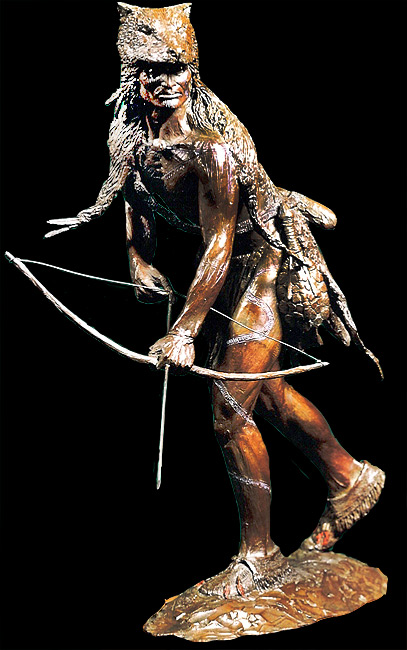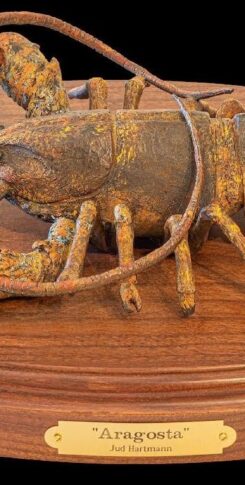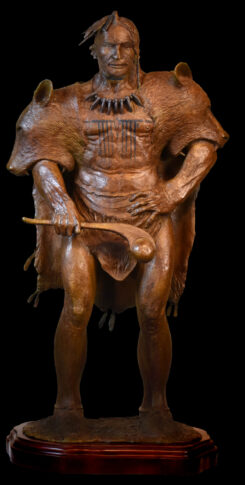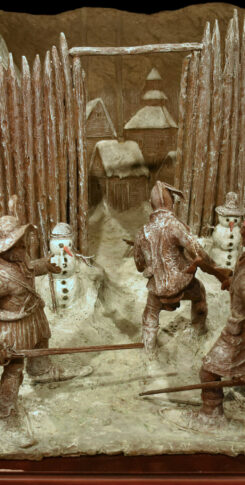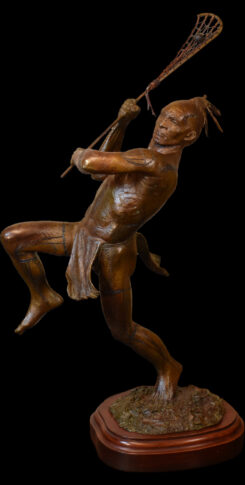A Huron Shaman
Bronze edition: 10 | Height: 20″
A Shaman is one whose Orenda is great, powerful (Orenda: “a potentiality to do or effect results mystically”). Those who claimed to control supernatural powers, who obtained special potency thru visions or dreams in which a powerful spirit had revealed itself to them were called Arendiwane.
The wearing of the wolf’s skin cape would likely indicate that this Shaman’s spirit guide was the wolf. Rattles were an important part of Shamanistic ritual: the noise from the turtle rattle warded off evil spirits while the tinkling of the copper cones (filled with red-dyed deer hair swinging from a whole otter skin known as a Shaman’s rattle) was thought to help induce a trance-like state in a patient. The act of the ritualized or ceremonial hunt may have to do with countering the malevolence of witches.
Seeking to anticipate or cure disease by satisfying dream wishes, the Shaman encouraged their patients to enter a trance-like state for the purposes of acting out or conscious fantasizing of repressed desires especially of a passive or dependent nature. It is thru the dream that the soul revealed itself to the Shaman.
“Dreams are to them the language of the soul.”
Jesuit relations (c. 1640)
“Intuitively, the Iroquois had achieved a great degree of psychological sophistication. They recognized conscious and unconscious desires and were aware that the frustration of these desires could cause mental and physical illness. They understood that these desires were expressed in symbolic form by dreams but that the individual could not always properly interpret these dreams himself. They had noted the distinction between the manifest and latent content of dreams and employed what sounds like the technique of free association to uncover the latent meaning. And they considered that the best method for the relief of psychic and psychosomatic distress was to give the repressed desire satisfaction, either directly or symbolically. It would be fair to say that the 17th and 18th century Iroquois’ understanding of psychodynamics was greatly superior to that of even the most enlightened Europeans of the time.”
A.F.C. Wallace (1969)
In the 17th century the Shamans were the Jesuit’s chief rivals and were, not surprisingly, usually considered to be charlatans by them. But even the Jesuits had to admit that some Shamans had great power that, in their view, could only be explained as resulting from an apparaent alliance with the devil.
“There are more things in heaven and earth Horatio, than are dreamed in your philosophy.”
William Shakespeare “Hamlet” (c. 1602)

